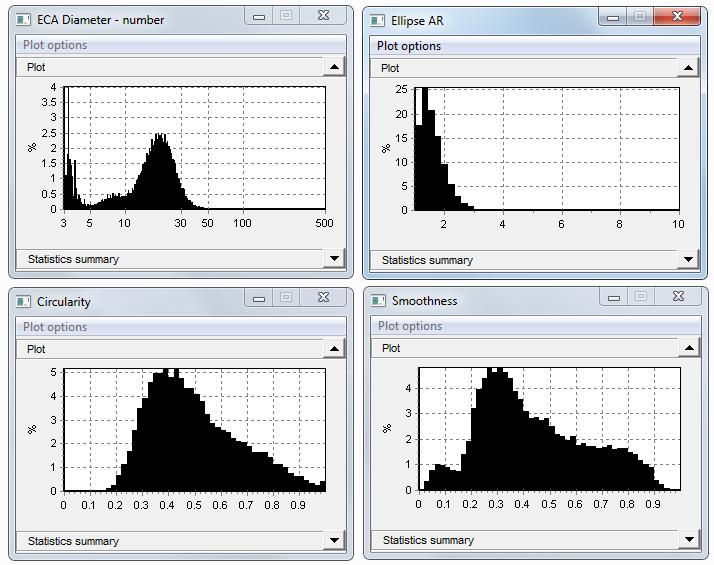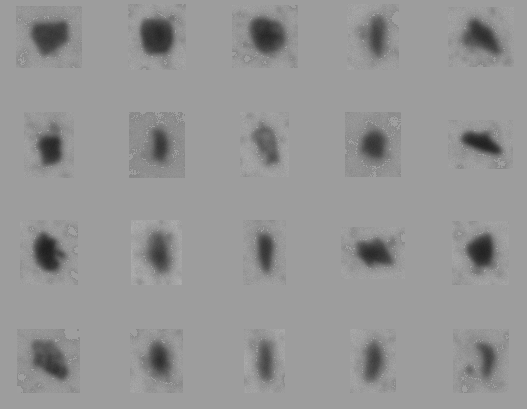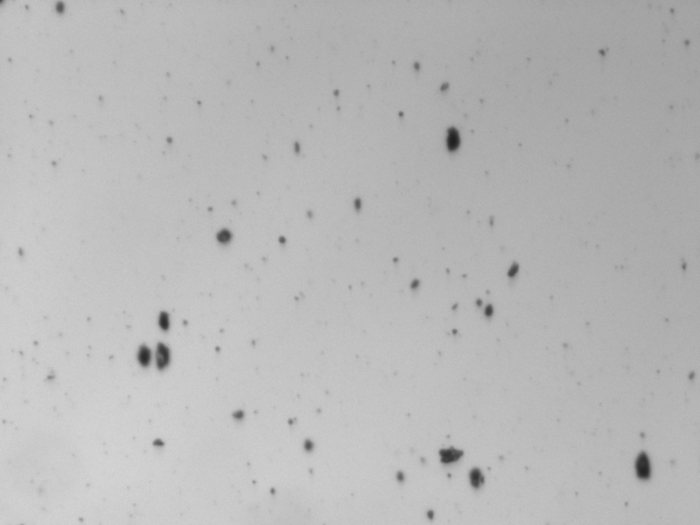The challenge
Ocean floor sediments are studied by marine scientists. They are composed of fine particles of sand, clay, volcanic ash, minerals and organics. The small grain size makes measurement a challenge. Two different kinds of sediment were studied for this example.
Applicable measures |
Measure
|
Range of acceptance
3 – 500 microns |
The first sample is made up of very fine grains below 50 microns in size. This is more like a silt than sand grains. A typical image has a high concentration of tiny particles:

A sample of thumbnails looks like:

With a particle concentration this high, clusters of particles are sometimes counted as a single unit. The faint thumbnails seen here are such clusters. They can be bypassed in a reanalysis of the sample.
The Circle shape model is best for such small sizes. Just three measures are sufficient for this first sample: ECA diameter, Circularity and Smoothness. We add Ellipse Aspect Ratio to see if there are non-spherical objects present. The unfiltered results of this sample show an uneven distribution of sizes below 50 microns:

To bypass clusters, reanalyze the sample with these constraints: circularity greater than 0.35, smoothness greater than 0.4, and rectangularity greater than 0.65. With that filter, a sample of thumbnails has this appearance:

The filtered reanalysis gives a size distribution that is mostly between 10 and 50 microns. Circularity and smoothness are considerably higher now.

The second sample has slightly larger and better-defined particles. This is a typical image:

Particle thumbnails show crystalline grains with an aspect ratio of about 2:1.

Fitting ellipses to these grains gives a good measure of length and width (numbers shown are EEA length).

Filtering is not needed for this sample. The size and shape analysis results are below. Particle lengths are between 10 and 200 microns. Circularity is centered around 0.6, reflecting the non-spherical shapes.


